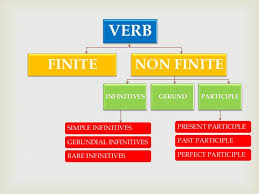
I teach Maths, English Grammar and Spoken English efficiently. My wish is to teach the children of all countries online. My classes will be interactive and interesting. I render assignment help and proof reading through e-mail learning and whatsapp learning. skype id: selviraveendran mail id : onlinetutorselviraveendran@gmail.com Whatsapp No: 9442624629
Popular Posts
-
SENTENCE PATTERNS WITH EXAMPLES Subject (S) Verb (V) Object (O) Complement (C) Adverbial (A) Direct Object (DO) Indirect...
-
Sentence Pattern - Exercise Identify the pattern of the following sentence : 1.She / will come a) SV b) SVO c) SVC d) SVO...
-
7 Basic Sentence Patterns The English language has seven basic sentence (or clause) patterns. Examples are: John / laughed. (SV)*...
-
Sentence Pattern: What is sentence pattern? Systematic arrangement of words in a sentence meaningfully is sentence pattern...
-
TYPES OF SENTENCES In writing and speaking, there are four basic types of sentences that we use for different purposes: declarati...
-
FINITE AND NON-FINITE VERBS Identify the finite and non-finite verbs in the following sentences. 1. My little brother wants to be ...
-
PHRASES WORKSHEET Identify the phrases in the following sentences and state their kind 1. He was a man of great wealth. 2. Th...
-
English Grammar Worksheets Free PDF ebook Download from Larisa School of Language Nikolaev Ukraine over One Hundred Pages from Laris...
BUZZSPROUT EPISODES
Saturday, November 26, 2016
Sunday, November 20, 2016
Friday, November 18, 2016
PARTS OF SPEECH
PARTS OF SPEECH
NOUNS
A noun is a word used as the name of a person, place or thing.
Examples: King, Mohan, Sarita, Mumbai, Table
PRONOUNS
A pronoun is a word used instead of a noun.
Examples: He, She, It, They
ARTICLES
The words ‘a’, ‘an’ and ‘the’ are called articles. They are used before nouns.
VERBS
A verb is a word that describes an action or occurrence or indicates a state of being.
Examples: He talks to Sameer, She sings a song
ADJECTIVES
An adjective is a word used to describe a noun.
Examples : Beautiful house, Tall man
ADVERBS
An adverb is a word which modifies the meaning of a verb, adjective or another adverb.
Examples: He runs fast, They fought bravely.
An adverb is a word which modifies the meaning of a verb, adjective or another adverb.
Examples: He runs fast, They fought bravely.
PREPOSITIONS
A preposition is a word which shows the relation between the noun or pronoun and other words in the sentence.
Examples: The boy is in the room, The book is on the table.
CONJUNCTIONS
A conjunction is a word which joins to sentences to complete their meaning.
Examples : They reached the station but it was too late.
He put on his shoes because he was going for a run.
INTERJECTIONS
An interjection is a word which expresses sudden feeling or emotion.
Examples : Hello!, Alas!, Hurray!, Oh!
Sunday, November 13, 2016
How to Integrate Sin^2 X
How to Integrate Sin^2 X
The solution to the integral of sin^2(x) requires you to recall principles of both trigonometry and calculus. Don't conclude that since the integral of sin(x) equals -cos(x), the integral of sin^2(x) should equal -cos^2(x); in fact, the answer does not contain a cosine at all. You cannot directly integrate sin^2(x). Use trigonometric identities and calculus substitution rules to solve the problem.
Use the half angle formula, sin^2(x) = 1/2*(1 - cos(2x)) and substitute into the integral so it becomes 1/2 times the integral of (1 - cos(2x)) dx.
Set u = 2x and du = 2dx to perform u substitution on the integral. Since dx = du/2, the result is 1/4 times the integral of (1 - cos(u)) du.
Integrate the equation. Since the integral of 1du is u, and the integral of cos(u) du is sin(u), the result is 1/4*(u - sin(u)) + c.
Substitute u back into the equation to get 1/4*(2x - sin(2x)) + c. Simplify to get x/2 - (sin(x))/4 + c.
Tuesday, November 1, 2016
FINITE AND NON-FINITE VERBS
FINITE AND NON-FINITE VERBS
Identify
the finite and non-finite verbs in the following sentences.
1.
My little brother wants to be an actor.
2.
She worked hard to pass the test.
3.
I couldn’t solve the problem.
4.
To err is human.
5.
Your duty is to cross the river without getting noticed.
6.
The doctor is attending to the injured people.
7.
She opened the door.
8.
The students were asked to submit their assignments by Friday.
9.
The teacher encouraged the students to work hard.
10.
The dog wagged its tail to show its happiness.
Answers
1.
My little brother wants to be an actor. (wants – finite; to be – non-finite)
2.
She worked hard to pass the test. (worked – finite; to pass – non-finite)
3.
I couldn’t solve the problem. (couldn’t solve – finite)
4.
To err is human. (to err – non-finite; is – finite)
5.
Your duty is to cross the river without getting noticed. (is – finite; to cross
– non-finite; getting – non-finite)
6.
The doctor is attending to the injured people. (is attending – finite)
7.
She opened the door. (opened – finite)
8.
The students were asked to submit their assignments by Friday. (were asked –
finite; to submit – non-finite)
9.
The teacher encouraged the students to work hard. (encouraged – finite; to work
– non-finite)
10.
The dog wagged its tail to show its happiness. (wagged – finite; to show –
non-finite)
Subscribe to:
Posts (Atom)







